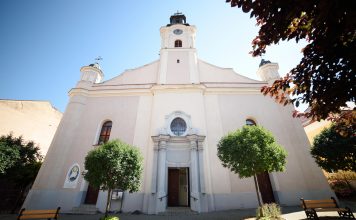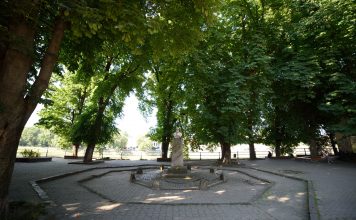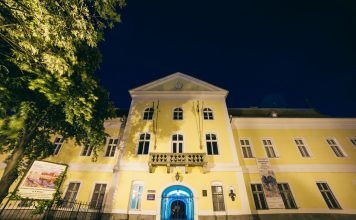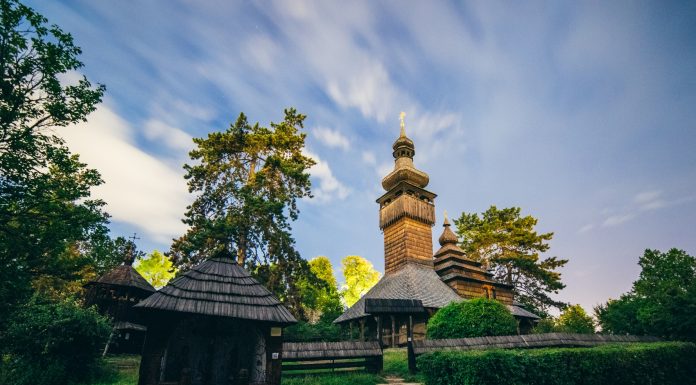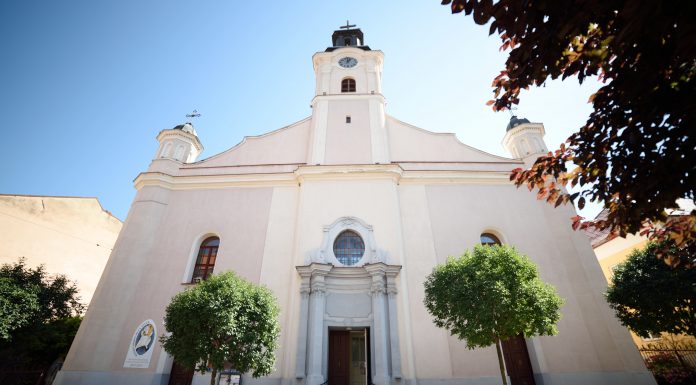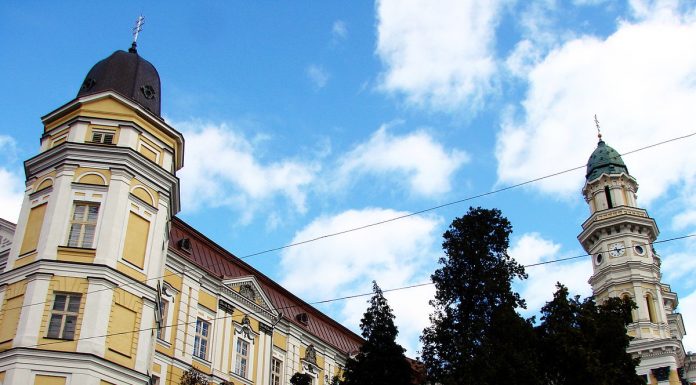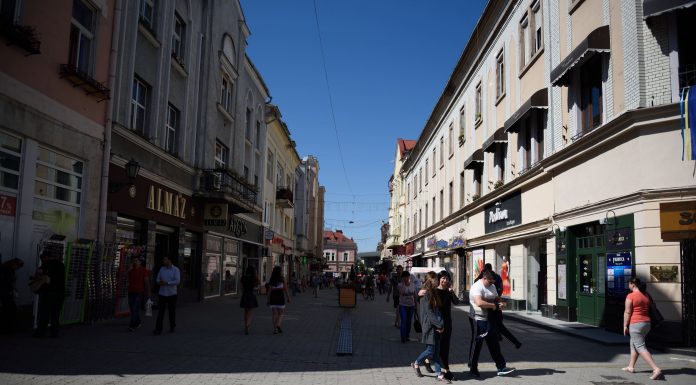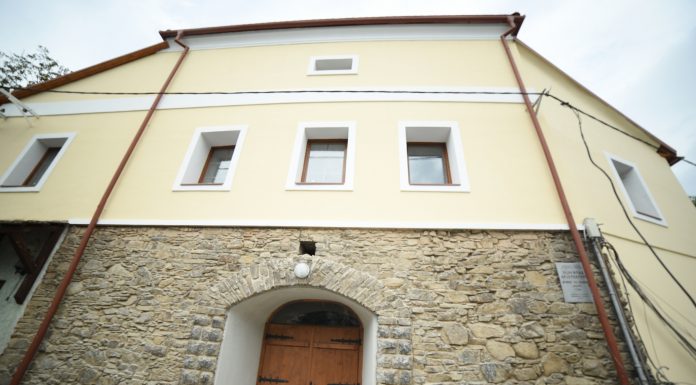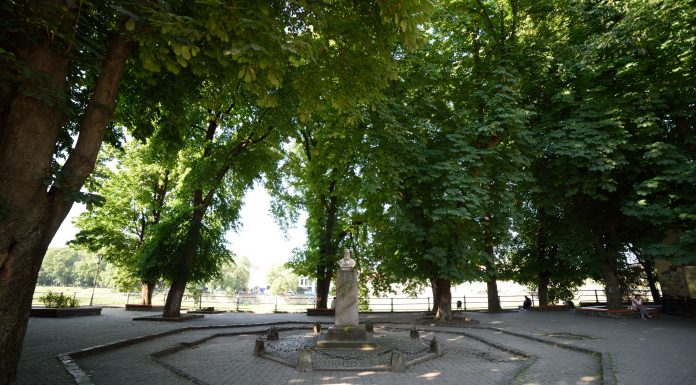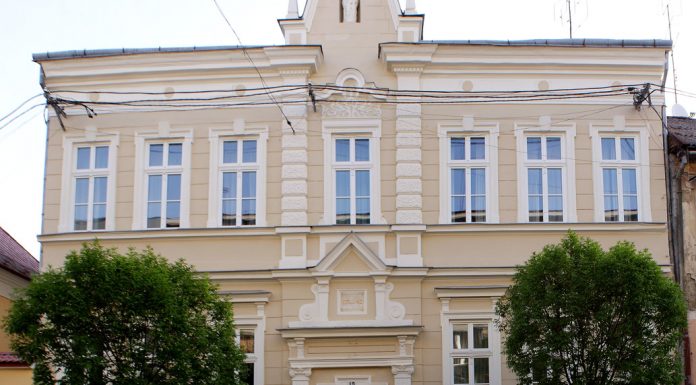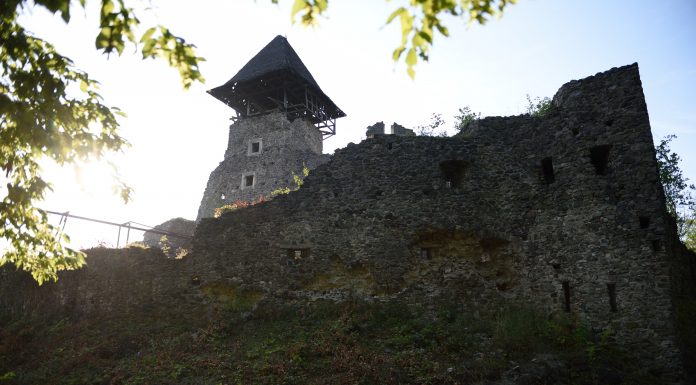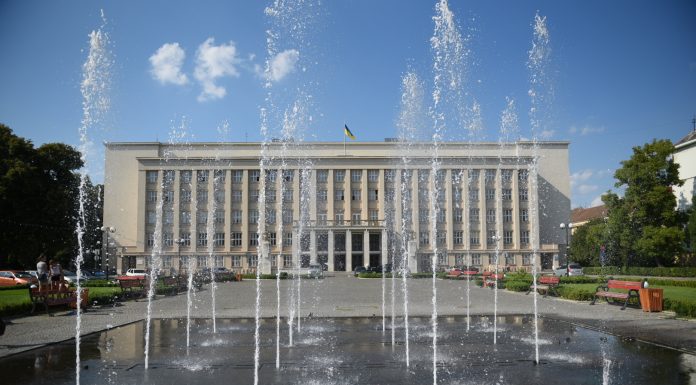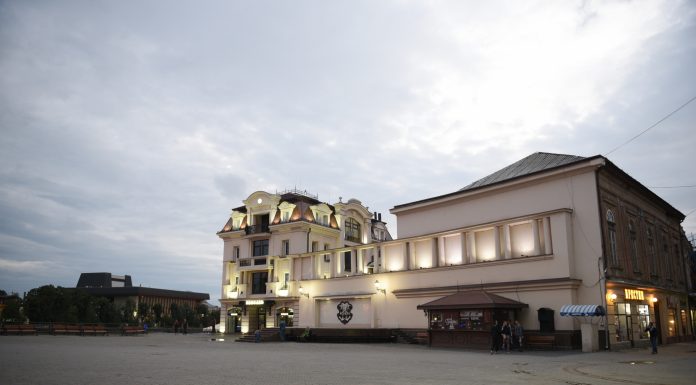Next to Uzhgorod Castle a Transcarpathian village is on display, unchanged since ancient times. Located under the open sky, The Museum of Folk Architecture and Rural Life welcomes visitors to view architectural monuments of a traditional Transcarpathian village, as well as samples of the oldest and most common types of hand-made folk crafts. Most of the buildings date from...
The Church of St. George is a 17th century Roman Catholic temple, built by the mayor of Uzhgorod George Druget, in place of a destroyed Lutheran temple. In the 18th century the temple was rebuilt in neo-Baroque style. One piece of the interior that deserves special attention is an unusual neo-Baroque altar (1895) – the work of painter Johann Lucas Kracker. I In 2000-2001, after...
Next to the Cathedral is the Episcopal Palace, which is an imposing historical and architectural monument of 18th century Uzhgorod. The plan of the palace is L-shaped, with two octagonal towers at the top. The western facade is decorated with a portico and a stucco coat of arms of Bishop Bachynskyi.
The history of the Episcopal Palace is inseparable from...
In a 1691 description this street was mentioned as Mostova, or Bridge Street. Craftsmen that worked for the lords of the castle lived here. Since the time of Ukrainian independence the street has had the name Korzo.
Today this is a pedestrian area for strolls, recreation and shopping. Its modern architectural appearance emerged at the end of 19th century. Korzo Street...
The building was constructed in 1781. At first, the premises were used to store food and drinks, but after the original brewery located there closed, it was transformed into a hotel, later into a technical school and carpenter school. After Transcarpathia became part of Czechoslovakia, a wine bar was opened in the “Owl’s nest”. By the end of the...
Fentsyk Square is one of the most imposing places in Uzhgorod. Its construction began in the middle of the 19th century. Here, almost every building is of historical significance.
At the far eastern end of the square stands the largest and most beautiful Jewish synagogue of Transcarpathia. Next to it, on the bank of the river Uzh, is one of...
From 1902-1907 the building housed a Christian educational institution for girls: the Roman Catholic Lyceum of St. Gizella. According to Hungarian history, St. Gizella was the wife of the first Hungarian king, Stephen I, who baptized Hungary. During Soviet rule, a music school was created in the building and the sculpture of St. Gizella, the symbol of the building,...
Uzhgorod can be rightly considered the “Little Paris” of Transcarpathia. Despite the fact that Uzhgorod is the smallest of all regional centers of Ukraine, it has more than enough historical, architectural and natural sites for one weekend trip. The town at different periods in time was under the rule of Czechoslovakia and Hungary, which unsurprisingly has left a unique...
Dominated by the regional administration building at one end, since 1999 the square has been decorated with a large statue of Ukraine’s national poet, Taras Shevchenko. In 2001 a grass lawn was installed, with lights. In 2011 a fountain was re-installed. On the left side of the square, there’s a rose garden and right behind it is the building...
The square is named in honor of a theatre, opened on 7th of July, 1920 with a performance of the well-known Ukrainian play, “Natalka Poltavka”. In July 1921 the famous Ukrainian director Mykola Sadowskyi was invited to be the head of the theatre. Since 2005 the theatre has had the name „Bavka”. Long ago in Verkhovyna regions this was a generic name for...

